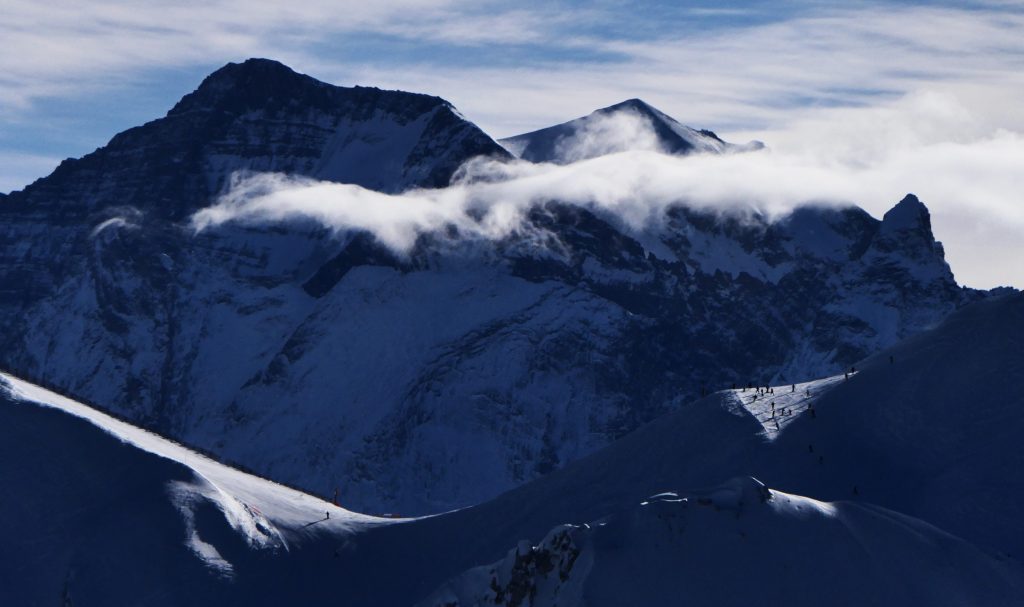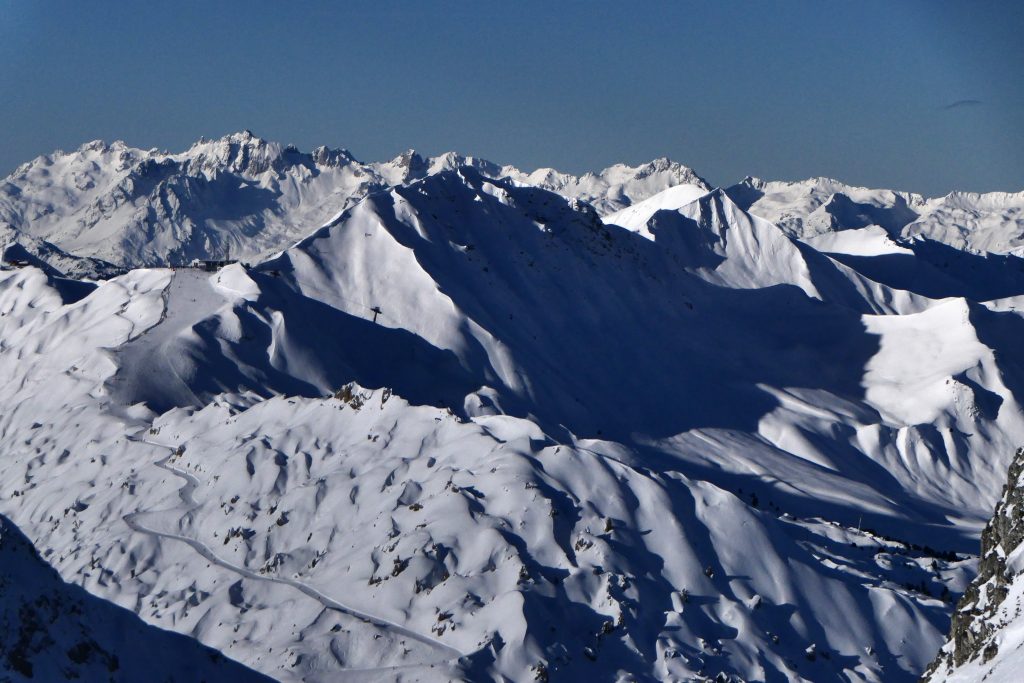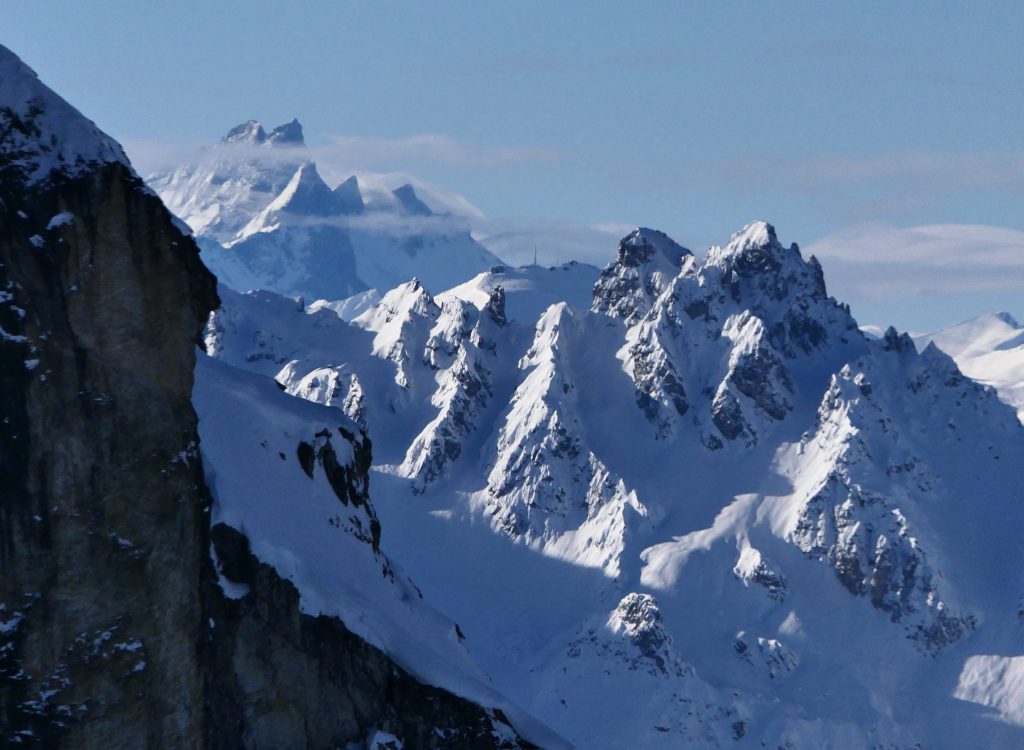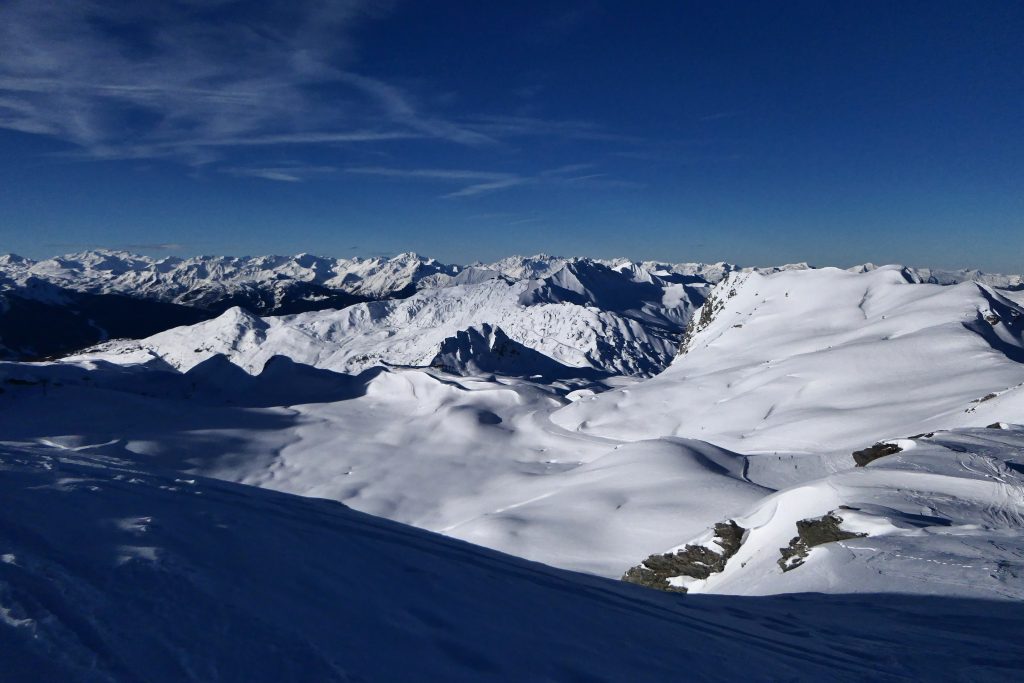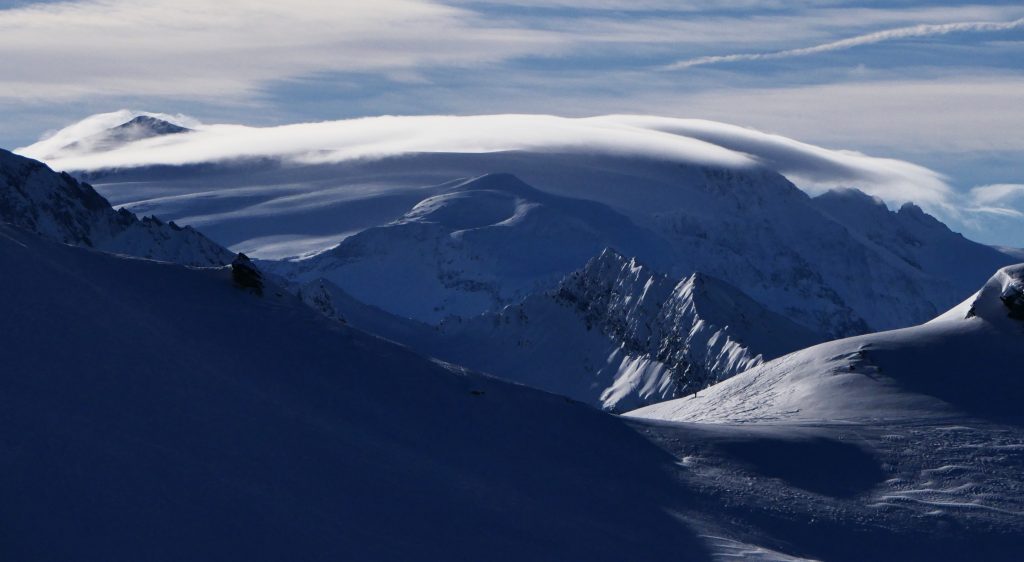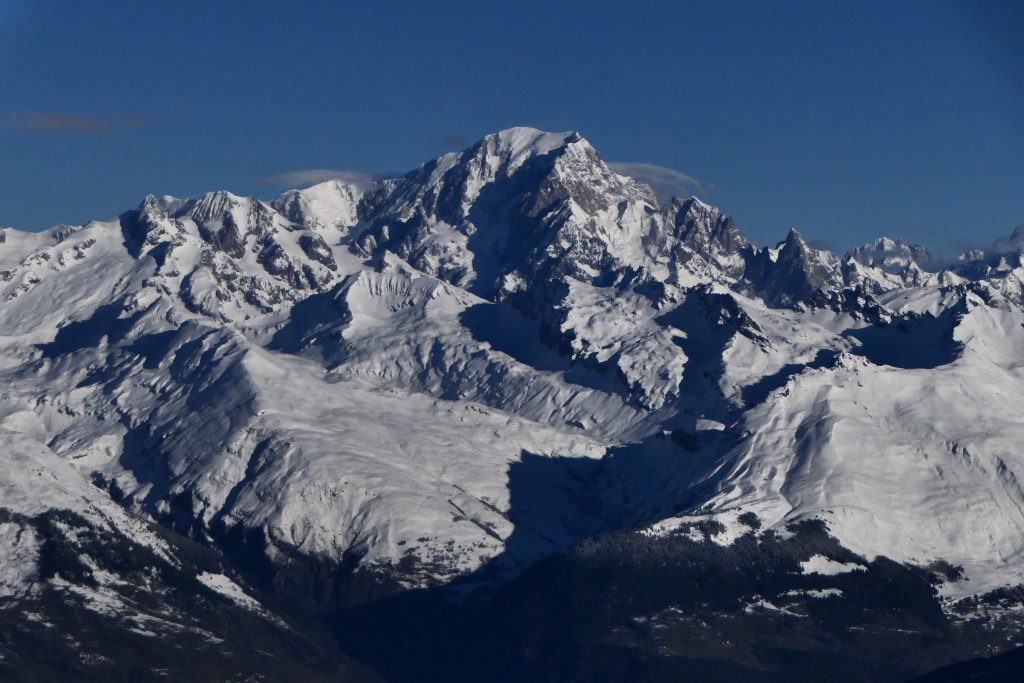Getting a diverse (both age and experience) family group from zero to “green piste hero” in a few hours unfortunately didn’t leave enough time for video – but everyone was able to recognise their progress very clearly and that’s more important.
My goal was to make use of whatever skills already existed but to concurrently relegate classic ski school dogma to the dustbin and provide a simple core set of skills using fundamental principles that set the scene for unobstructed progress to any level.
- Skating
- Difference between Snowplough and Skating
- Using Skating muscle to turn in a plough
- Dynamic Skating in a turn
- Skating Step turns
- Foot Forward Technique (for coping on steep slopes)
Skating
Skis diverging yet holding the adductor muscles active on both legs.
(James needs to concentrate on this point. I’d have checked his boot shaft alignment but we ran out of time.)
To skate more efficiently – fall forward and let gravity generate the forward propulsion.
The key to skiing is being aware of the motion of the centre of mass due to skating and gravity.

Difference between Snowplough and Skating
The key difference between snowplough (converging skis) and skating (diverging skis) is that while skating requires the adductor muscles to be active snowplough requires them to be relaxed.
The snowplough is useful as a tool for learning and for stopping at low speeds and gradients – in ski lift queues etc. but it’s not really a way to ski.
Using Skating muscle to turn in a plough
Integrating the skating muscle (adductor) with the plough is a simple act of activating the muscle on one leg only – the one you want to push you around (left leg turns you to the right). You simply get more strongly deflected due to placing one skis lightly more on edge. There is no “transfer of weight” etc. and you are not trying to apply “pressure” to a ski.
Dynamic Skating in a turn
Now instead of just activating the adductor muscle you also push (skate) your body in the direction of the turn from that one leg. While still in a snowplough you are introducing a full skate with the outside leg in the turn – pushing your centre of mass into the turn (like a motorbike inclines into a turn).
Skating Step turns
Now proper skating step turns! Incrementally moving the centre of mass inwards.
Both James and Floss spontaneously ended up with skis parallel when doing this exercise. This is what we are aiming for – controlled parallel skiing.
Foot Forward Technique (for coping on steep slopes)
To be safe on steeper slopes while still using a plough we introduced “Foot Forward Technique”… This gives security through the start of a turn on steep terrain.
Pushing the outside (uphill initially) foot forward during the turn. The foot never gets in front of the other foot – it just tightens the turn instead.
The exercise is practised with skis off and standing in ski boots. For this static exercise we use ski pole support with the body faced downhill with the uphill foot pointing across the hill and the downhill foot pointing downhill and the heel jammed into the snow. The uphill boot is pulled over onto its inside edge and pushed forwards in a natural arc – the leg rotating at the hip joint.
Here is some video of exactly the same action in ice hockey training. In skiing the direction of travel would be straight downhill instead of straight ahead on the flat ice.
Today’s photos (morning)
